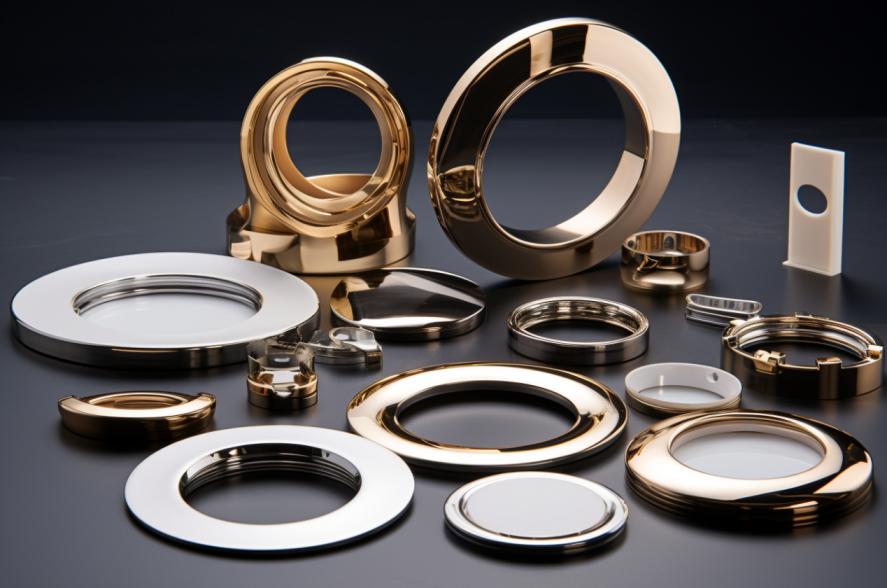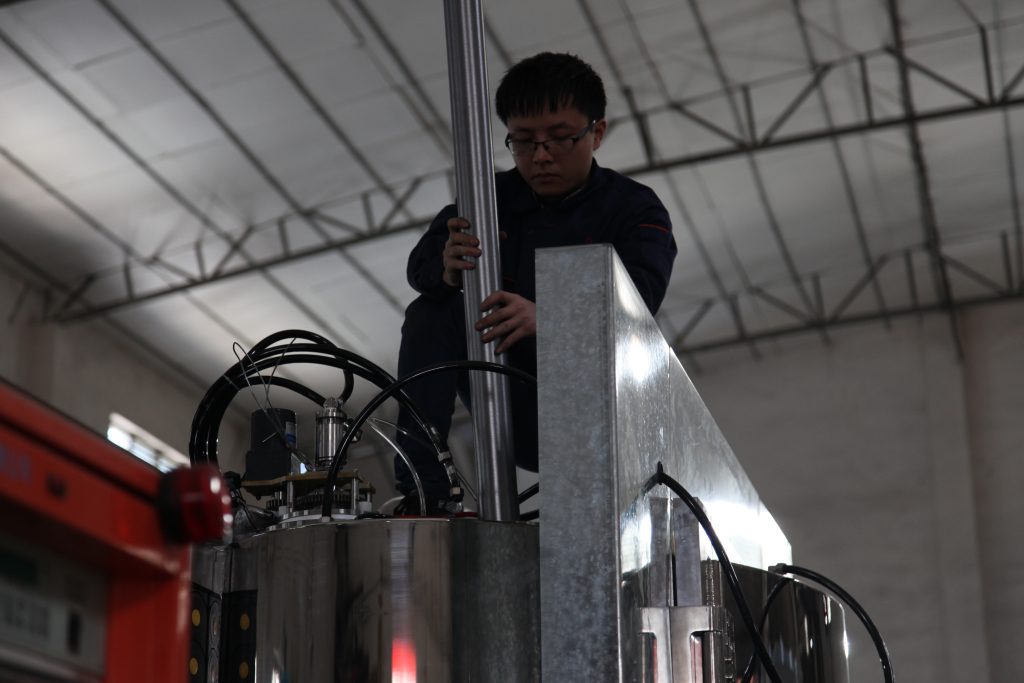How Thin Film Vapor Deposition Coating Works
Want your tools to stay sharp for a decade or your phone chip to run faster? Thin film vapor deposition coating is the trick. This tech puts a super thin layer on surfaces. It’s tough, fights rust, and conducts electricity. From machine parts to fancy electronics, it’s everywhere. Let’s talk about how thin film vapor deposition coating works, what gear it uses, what it’s doing, and where it’s going next.
1. Basics of Thin Film Vapor Deposition Coating
What’s Thermal Evaporation
Thermal evaporation is a key method in PVD coating. Picture this: you take a metal, say titanium nitride coating, and stick it in a vacuum chamber called a PVD chamber. You heat it up until it turns into vapor. That vapor floats to a surface, like a knife blade, cools down, and hardens into a thin film coating. This layer is only a few nanometers thick but makes the blade crazy hard and rust-proof.
The whole thing happens in a vacuum environment with vacuum coating technology. Air molecules mess up the vapor’s path and ruin the coating. A vacuum pump torr sucks the chamber near-empty, so vapor moves freely, and the coating comes out smooth as glass.
PVD vs. CVD: What’s the Difference
PVD coating and chemical vapor deposition (CVD) are the big players in coating tech. PVD uses physical methods, like heating or blasting, to turn materials into vapor and stick them on a surface. It’s simple, makes pure coatings, and works great for metals like copper coated, ceramics like PVD coating materials, or even plastics like PVD on plastic. CVD, on the other hand, uses chemical reactions. Gas molecules react on the surface to form a coating. It’s good for complex materials but the equipment costs a fortune.
For example, PVD is often used to coat PVD coated stainless steel with titanium nitride coating for durability and looks. CVD shines in the CVD semiconductor industry, making precise silicon-based coatings. Which one to pick? Depends on your budget and what you need.
How the Coating Forms
Thin film vapor deposition coating happens in three steps, each linked to the next:
- Material Vaporization: Pick a coating material, like titanium nitride coating or gold PVD coating, and put it in a PVD chamber. Heat it with thermal evaporation or electron beam evaporation until it turns to vapor. You gotta control the temperature and evaporation rate tightly to keep the vapor steady.
- Vapor Travel: The vapor molecules move freely in a PVD vacuum, hitting the surface of a base material, like stainless steel or plastic. The vacuum keeps air out of the way, so the vapor goes straight to the target.
- Film Formation: When vapor hits the cool surface, it hardens and stacks into a thin film deposition. By tweaking the surface temperature and vapor flow, you can make the coating tough as DLC coating.
2. Thin Film Coating Process
Prep Work
A top-notch thin film vapor deposition coating starts with a clean base material. Substrate cleaning uses ultrasound or chemical solutions to wipe out oil and dust, so the coating sticks tight. Whether it’s metal like PVD coated stainless steel or plastic (like PVD on plastic), a cleaner surface means a better coating.
Next, the base material goes into a PVD chamber. A vacuum coating system pump drops the pressure below 10^-6 torr. This vacuum deposition setup keeps air molecules from messing up the coating. That’s how you get a solid coating.
Evaporation Stage
The evaporation stage needs the right evaporation system. Thermal evaporation works for low-melting materials, like aluminum coating. Electron beam evaporation is better for high-melting stuff, like titanium nitride coating or gold PVD coating. During heating, you gotta control the evaporation rate to keep the vapor steady. That avoids defects in the coating.
Deposition Stage
Vapor molecules hit the base material’s surface and start forming a thin film deposition. Vacuum deposition makes sure the molecules move smoothly. Rotating the base material, called deposition uniformity, keeps the coating even. Want a coating as hard as DLC coating? You need to tweak base material temperature and vapor flow just right.
Post-Processing
Once the coating’s done, it needs cooling and film annealing to cut internal stress and boost durable wear. High-temperature annealing also improves the coating’s structure, making it tougher with wear resistant plating. Finally, a microscope or hardness tester checks coating performance testing for thickness and grip. A good thin film vapor deposition coating can double a part’s lifespan.

3. Gear and Tech Upgrades
Main Equipment
Thin film vapor deposition coating needs precise PVD equipment to get the job done:
- Vacuum Chamber: A vacuum coating system uses a vacuum pump torr to drop pressure to 10^-6 or 10^-8 torr. This keeps vapor molecules moving without hitting air.
- Evaporation Source: An evaporation system, like a resistance heater or electron beam evaporation gun, turns materials into vapor.
- Substrate Holder: This holds the base material, like PVD coated stainless steel, and spins it to make the coating even.
These pieces work together to make coatings thin and strong.
Key Settings
Getting PVD process right depends on tight control. PVD vacuum has to stay at 10^-6 to 10^-8 torr to block air molecules. Evaporation rate sets how steady the vapor comes out. Deposition uniformity, from spinning the substrate, keeps the coating thickness consistent. Think of it like cooking a perfect steak. You gotta get it just right.
Tech Upgrades
Want tougher thin film vapor deposition coating? High-tech tricks can help. Ion beam assisted deposition (IBAD) blasts the surface with ions to make coatings stick better, especially for DLC coating. Magnetron sputtering uses a magnetic field to boost plasma and speed up deposition, often for PVD titanium coating or PVD chrome coating. Pulsed laser deposition zaps materials with a laser for super precise coatings, but it’s pricey. These upgrades push coating performance and uses to new levels.
4. Materials and Real-World Uses
Common Coating Materials
Thin film vapor deposition coating uses tons of different materials. Each has its own strengths:
- Metals: Aluminum coating, copper coated, gold PVD coating. They conduct electricity well and resist corrosion. Perfect for electronics or decorative stuff.
- Oxides: Titanium dioxide. It’s super hard and lets light through. Often used for anti-reflective coating on optics.
- Compounds: Titanium nitride coating, DLC coating. These are crazy durable and chemically stable. Machine parts love them.
Pick a material based on what you need. Every one’s got what it’s best at.
Where It’s Used
Thin film vapor deposition coating shines in all kinds of industries. Check this out:
- Optics: Anti-reflective coating makes eyeglass lenses clearer. Mirror coating boosts laser efficiency.
- Electronics: Conductive film goes into PVD semiconductor work. It builds high-performance chips. For example, ultra-thin coatings in phone processors can speed things up by 10%.
- Machinery: Wear resistant Plating makes tools and gears last longer. Titanium nitride coating can stretch a tool’s life by 3 to 5 times. Saves you a ton on replacements.
- Energy: Solar cell coating ramps up efficiency in solar panels. Some coatings boost it by over 10%. Thermal barrier coating protects gas turbines, keeping them running longer.
These uses make thin film vapor deposition coating a backbone of modern industry.

5. Benefits and Future of Thin Film Coating
Advantages
Thin film vapor deposition coating is a big deal because of these key strengths:
| Advantage | Description |
|---|---|
| High Purity | Vacuum coating technology keeps out impurities. The coating is super clean, perfect for PVD semiconductor and medical coating. |
| Precise Control | You can tweak the coating thickness from a few nanometers to microns. It fits anti-reflective coating for optics or wear resistant plating for toughness. |
| Material Flexibility | It works on metals like titanium nitride coating, ceramics, or even PVD on plastic. It’s super versatile. |
| Awesome Performance | Wear resistant plating and corrosion resistant coating make it durable. Plus, it can look shiny like gold PVD coating. |
| Eco-Friendly Process | It uses fewer harmful chemicals than traditional plating. It’s green and efficient. |
These perks make PVD coating a sweet spot between performance and cost.
Future Trends
Thin film vapor deposition coating has a bright future. Here are some exciting directions to watch:
1. Smarter Automation
PVD process is getting smarter. Picture AI and sensors tracking PVD vacuum and evaporation rate in real time, adjusting settings on the fly. This cuts out manual work, boosts coating quality, and ramps up production. It’s a game-changer for big-scale jobs, like putting wear resistant plating on car parts in bulk.
2. Tougher Combined Tech
Mixing magnetron sputtering with ion beam assisted deposition (IBAD) makes thin film vapor deposition coating harder and longer-lasting. For example, DLC coating can get close to diamond-level toughness. It’s perfect for high-end machinery or medical coating, like coating heart stents to keep them tough and body-friendly.
3. Greener and Cheaper Process
Going green is the future. Better vacuum pump torr efficiency and less energy use make thin film vapor deposition coating eco-friendly. New non-toxic materials cut costs too. This opens the door for more industries, like adding durable wear coatings to everyday products. It’s green and saves money.
4. Nano-Level Coatings Open Doors
Once pulsed laser deposition gets cheaper, it can create ultra-thin nano coatings. These high-performance coating layers could go on flexible electronics or biomedical implants. Think wearable devices with nano coatings that are waterproof, scratch-proof, and super lightweight. It’s the next big thing.
These trends mean thin film vapor deposition coating isn’t just getting better. It’s set to shake up fields like medicine and wearables, making our lives better.

